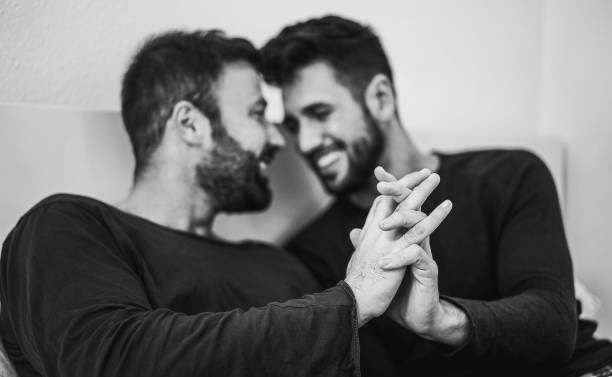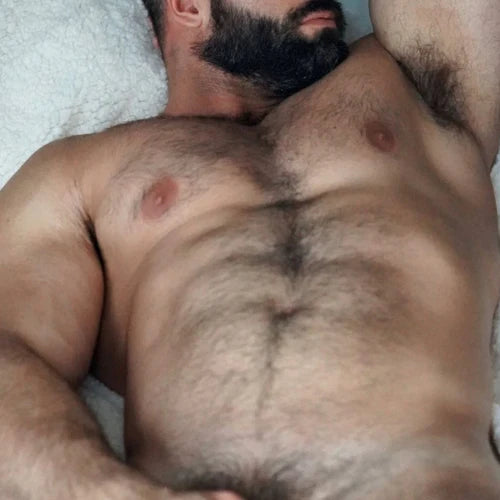What’s Good About Being Gay? The Perspective
This article explores gay and bisexual male adolescents’ positive perceptions of their sexual orientation identity. In-depth qualitative interviews were conducted with an ethnically diverse sample of 63 gay/bisexual male adolescents in Chicago (N=42) and Miami (N=21). Data revealed two major conceptual categories: 1) positive personal conceptualizations of being gay/bisexual, and 2) resiliency in the face of gay-related oppression. Additional primary themes and sub-themes were identified within each category that further illustrate how gay/bisexual youth were able to develop positive conceptualizations of their sexual orientation despite experiencing negative societal messages about being gay/bisexual. Implications for the development of interventions to promote the health and well-being of gay/bisexual male youth are discussed.
Adolescence is a developmental period where young people are maturing physically, emotionally and socially as they transition into adulthood (Erikson, 1980; Hill, 1983). One of the most critical developmental tasks during adolescence is the development of a unique and personal identity (Adams, Gullotta, & Montemayor, 1992; Erikson, 1980). Adolescent development is influenced by different levels of social interaction within multiple environmental systems (Bronfenbrenner, 1979, 1995), thus a range of individuals, peers and communities can play a significant role in an adolescent’s developing sense of identity. When these influences are negative, psychological distress among adolescents may result, especially for those youth who identify as lesbian, gay, or bisexual (Almeida, Johnson, Corliss, Molnar & Azrael, 2009; Hershberger & D’Augelli, 1995; Ueno, 2005).
Unfortunately, much of the extant research on LGB adolescent developmental factors has had a primary focus on traumatic life experiences such as victimization, harassment, and rejection, and the subsequent negative impact of such events on mental and physical health outcomes (c.f., Bontempo & D’Augelli, 2002; D’Augelli, 2002; 2006; D’Augelli & Hershberger, 1993; Garofalo, & Harper, 2003; Pilkington & D’Augelli, 1995; Ryan, Huebner, Diaz & Sanchez, 2009; Savin-Williams & Cohen, 1996; Telljohan & Price, 1993). Although the documentation and examination of various challenges faced by LGB adolescents is critical in helping researchers and practitioners to improve the life circumstances of LGB youth through different types of intervention, it is important to also highlight the strength and resiliency demonstrated by many LGB adolescents. Thus, this article takes a resilience-based approach to examining sexual orientation identity among gay/bisexual male adolescents by sharing their perceptions regarding the positive aspects of being gay/bisexual.
Cultural and Societal Challenges
United States (U.S.) society strives to maintain a hetero-normative order in which anything other than heterosexuality is stigmatized (Grossman, 2001; Herek, Chopp & Strohl, 2007; Rivers & D’Augelli, 2001). When individuals or groups do not conform to socially assigned roles that fit this order, they may be oppressed and marginalized by some in the heterosexual majority and become vulnerable to discrimination as well as other culturally and socially produced damaging forces (Savin-Williams, 2001; Stall, Freidman & Catania, 2008). In Mays and Cochran’s (2001) study on perceived discrimination among LGB adults in the U.S., gay and bisexual individuals reported higher frequencies of day-to-day and lifetime discrimination experiences as compared to their heterosexual counterparts. The primary reported basis for the discrimination was sexual orientation for some participants, and those who reported these incidents argued that they interfered with leading a “full and productive life” and made life generally more difficult (Mays & Cochran, 2001). For LGB adolescents, negative heterosexist forces can contribute to social isolation, stigma, and oppression, all of which may exacerbate the traditional developmental challenges faced by all adolescents (Harper & Schneider, 2003; Harper, Jerenwell, & Zea 2004; Ryan & Futterman, 1998).
Psychological Challenges and Mental Health Outcomes
The negative conditions created by societal and psychological challenges placed on LGB populations often leads to unique stressors and have been associated with various health disparities (Meyer, 2007; Stall, Freidman & Catania, 2008). Adolescent-focused research has indicated that stressors affecting LGB populations may include stigmatization due to disclosure of their sexual orientation identity and fear of disclosure and ridicule, all of which may be classified as “sexual orientation victimization” (Bontempo & D’Augelli, 2002). Ryan, Huebner, Diaz & Sanchez (2009) focused on the association between family rejection and substance use, risky sexual behavior, and suicide attempts/suicide ideation among LGB adolescents and found a positive relationship between family rejection and the physical and mental health risk variables they explored. Savin-Williams (2006) discussed the existing link revealed in prior studies between victimization of LGB adolescents/adults and clinical diagnoses of depression, anxiety and other negative mental health outcomes. Such studies suggest that outlets are not being provided for these youth to explore their identities and allow for a healthy and positive development. In addition to the basic challenges of adolescent development, LGB youth must face self-identity and disclosure issues regarding sexual orientation identity and are often not presented with healthy environments and opportunities to do so (D’Augelli, 2002; 2006; Jamil & Harper, 2010; Wilson, Harper, Hidalgo et al., 2010).
Few studies have specifically focused on strengths and resiliencies among LGB youth. One study that addressed this topic presented resiliency strategies among lesbian, gay, bisexual, and transgender (LGBT) young people in North West England and South Wales within the context of hetero-normative environments (Scourfield, Roen & McDermott, 2008). Resiliency strategies reported by LGBT youth included a belief in “natural sexual diversity,” the gained strength to resist discrimination and the ability to find safe and supportive LGBT spaces and people (Scourfield, Roen & McDermott, 2008). Interestingly, the study also highlighted that some of the participants who were open and proud of their sexual orientation simultaneously experienced feelings of ambivalence regarding their identity. These youth expressed the difficulty in constructing a positive sexual orientation identity in the context of highly structured cultural and societal forces that give privilege to heterosexuality. The authors assert that this ambivalence and inconsistency in comfort with one’s identity serves as yet another source of distress among LGBT adolescents (Scourfield, Roen & McDermott, 2008). These findings highlight the challenges LGB youth face in maintaining resiliency while having to actively counter hetero-normative pressures and oppression.
Another study examining LGB youth resiliencies focused on a sample of gay/bisexual male youth in Puerto Rico (Toro-Alfonso, Diaz, Andujar-Bello & Nieves-Rosa, 2006). This study used various measurement scales to determine participants’ perceived level of depression, social support, alcohol/drug use, and sexual activity. The results demonstrate the presence of a range of health-promoting strengths such as engagement in protected sexual activity, low consumption of drugs and alcohol, and the existence of strong social support networks (Toro-Alfonso, Diaz, Anduiar-Bello & Nieves-Rosa, 2006). The authors assert that even though these young men were living in a hetero-normative Puerto Rican culture with pervasive homophobia and cultural stigma, they developed resiliency strategies that helped them to overcome potential obstacles. The development of strong ties with members of their social support network in order to assist with integrating their sexual orientation identity with their Latino identity and the ability to adapt to changes were noted as key strengths exhibited by the youth. The authors further note that the participants’ lack of participation in risky sexual behavior suggests the presence of a positive identity and sense of self (Toro-Alfonso, Diaz, Anduiar-Bello & Nieves-Rosa, 2006). This was one of the few studies found to present resiliency strategies developed by gay/bisexual adolescents to combat negative social and cultural influences.
Results
The data related to youths’ conceptualizations of being gay/bisexual revealed two major conceptual categories—1) positive personal conceptualizations of being gay/bisexual and 2) resiliency in the face of gay-related oppression. Within each major category, several primary themes and sub-themes emerged. Quotes from participants are offered to illustrate the various themes and sub-themes, and allow for a better understanding of the lived experiences of gay/bisexual adolescents. Names of participants are replaced with a pseudonym to protect their identity—all age, ethnic identity, and sexual orientation labels listed are those reported by the youth.
Positive Personal Conceptualizations of Being Gay/Bisexual
The two themes identified as positive personal conceptualizations of being gay/bisexual were flexibility and connectedness. Within the theme of flexibility, three sub-themes emerged—sexual flexibility, environmental flexibility and gender flexibility. With regard to sexual flexibility, bisexual young men described the ability to have sexual relations with both males and females. One youth commented that being bisexual allowed him to not feel constrained to one sexual orientation category.
Um, positive things? Hum. I don't know. I get to like girls and boys, I guess. Um, I have to classify, I really have a problem with classifying myself. Like that's really an issue with me. I don't like to be classified as one thing, because then it doesn't really make you who you are. It's kind of this blending with the rest of the people. (Justin, 18 year old, multi-racial bisexual male)
In this aspect, the participant gained strength from resisting stereotypes associated with sexual orientation classification. He felt that by not identifying as gay or straight, he was able to be himself around others.
Another aspect of flexibility discussed by participants was the concept of environmental flexibility. Youth commented on how being gay/bisexual allowed them to explore more physical places and spaces, specifically ones that are gay-friendly. In this sub-theme the young men did not discuss the need to escape from unsafe spaces, but rather emphasized the benefits of visiting places specifically tailored to LGBT youth.
Well, I really think I'm really lucky when it comes to that. Like there's just so much available now that like I really like to utilize. Like there's so many organizations, like I go over to [name of agency] and there's gays everywhere. And um, there's just all, there's dances to go to. I love to go dancing. And I mean, it's just like if you like really sit down, like count your blessings, there's so much out there that I'm really like grateful for and like that I really am lucky to have available to me, like when it comes to in terms of like things that are oriented for my sexuality and for people that are like, and for places that I can go and be safe, doing whatever, and stuff like that. That's very important to me. (Paul, 16 year old, Italian gay male)
A third sub-theme, which emerged as a positive conceptualization, was gender flexibility. Participants who discussed gender flexibility reported the ability to experiment with gender roles. Specifically, the youth spoke about their ability to display both masculine and feminine traits.
I think you’re free from some of the things that we talked about, some of the ideas of what it means to be a man. You don’t really have to, it’s not something you really have to think about when you’re gay. You can kind of be who you are and not have to worry about um, being masculine or being ah, a stereotypical man. (Michael, 22 year old, White gay male)
Similar to the example on sexual flexibility, this participant utilized a strategy of resisting stereotypes specifically associated with gender. Many of the adolescents who spoke about gender flexibility offered their views on the concept of masculinity, and how being a man has been constructed by society. Individuals whose responses reflected this sub-theme expressed a sense of freedom, as well as a sense of strength gained from rejecting stereotypes associated with being a man.
The second major theme identified as a positive conceptualization was connectedness. Participants focused these internal messages either on being connected with females or connected to the gay community. The youth who described a connection with females emphasized that females generally find gay men trusting and valuable in providing emotional support, as compared to heterosexual men.
Well, I mean, there's a lot of things. I mean, like um, I feel like um, women are more trusting of me because I'm gay. Um, um, which is a plus, because I'm kind of gonna be that rock in a way, like they can come to me and talk to me about stuff. However, I mean, I guess I was coming up like that figure anyways before, but it's definitely more so now. (Sean, 21 year old, Eastern European gay male)
Another participant who commented on connectedness with females argued that the reason for this closeness is the fact that straight men typically befriend women for sexual purposes, while gay men do not. Additionally, he argued that both gay men and straight women are able to share their experiences with male sexual/dating partners and receive advice from one another.
Some youth expressed a sense of connection to the gay community. They discussed feeling connected to other individuals who had gone through similar experiences and their ability to bond through hardships. Participants also expressed the ability to form social support groups with other gay people.
Positive things about being gay? Um, it's, it's very easy to, to, when you do find somebody that is, that is very similar to yourself, it's very easy to find a connection with them because they've endured a lot of the same hardships that you have and, and you, and it's easy to talk, I feel like it's very easy to talk to somebody else who is gay, because they've experienced a lot of the same things that I have in coming and developing their identity. (Patrick, 20 year old, White gay male)
Resiliency in the Face of Gay-Related Oppression
Although many of the youth focused on positive conceptualizations of being gay/bisexual, some identified ways in which they had demonstrated resiliency in the face of oppression. Participants expressed their resiliency in four ways, including acceptance, self-care, rejection of stereotypes, and activism. Inherent in many of the themes and sub-themes in this section is the acknowledgement and confirmation that these youth have experienced various forms of oppression and marginalization related to their sexual orientation, but they demonstrated resiliency and strength in the face of these negative forces.
Youth who discussed messages of acceptance either centered their responses on self-acceptance or acceptance by others. The youth who described self-acceptance argued that exploring their sexuality allowed for the opportunity to be who they are, which resulted in greater feelings of happiness.
Well, um, it’s, it’s fun (chuckles) at times. Um, positive about being gay? Ah, well, just because it is what I am, um, the more I come to accept it, the more fun I have, I guess, with it. Ah, it’s hard to say a lot of positive things of being gay, because society doesn’t see it the same way. I don’t know. So that’s all I have to say. (Ben, 20 year old, White gay male)
Here the participant acknowledges pervasive negative societal views of gay/bisexual people, but he has been able to find self-acceptance and enjoyment in being gay. Another participant who discussed self-acceptance focused on the importance of “not hiding behind something.” He empowered himself and gained strength by not concealing his sexual orientation identity around others.
Several of the youth reported acceptance by others as another form of resiliency. They discussed feeling connected to friends who accepted them as gay/bisexual young men, and expressed how such acceptance served as a form of social support. The following youth talks about the fun he has with his friends who are not gay/bisexual and emphasizes that a critical aspect of his relationship with them is that they do not “judge” him or hold negative views of gay/bisexual people
Now the positives, like my friends and stuff, they're the ones I kick it with, them, I'm acting like, okay, we gonna go, we gonna go out with him and we just gonna have fun. We gonna enjoy ourselves, to go the movies, go to whatever, go out to eat and stuff like that. They don't judge me… (Chris, 23 year old, African American gay male)
Participants also acknowledged self-care as a resiliency strategy. Those that stressed the importance of self-care discussed the need to take care of oneself on both an emotional and physical level. Emotional self-care was discussed in the context of acknowledging and being aware of the negative emotional impact of heterosexist societal messages on them as gay/bisexual young men, and then building resistance strategies to such pervasive negativity. This often resulted in increased vigilance around homophobic individuals. One young man discussed the potential negative consequences of being openly gay around “homophobic people” and the need to be responsible when making decisions about sexual orientation disclosure.
And be careful. Be responsible with it. Not just be, I mean, if you're out you have to be careful of like you don't run into like those certain people that's gonna hurt you. Like you have to be responsible enough to take care of yourself, if you're gonna be out….Well, think about like certain things, like think that, try not to get shot or something. Be careful who you tell or who are around, everything, be out and about, like try not to get killed or anything. Because there's a lot of homophobic people out there (Jose, 19 year old, Hispanic queer male)
Physical self-care was typically discussed in the context of physical appearance and sexual health, such as carrying condoms in order to protect one from sexually transmitted infections. This sub-theme was not directly connected to experiences of oppression as gay/bisexual youth, but some of the youth did note higher rates of HIV among gay/bisexual men as a motivating factor in their use of condoms during sexual activity.
I mean, I think if you’re bisexual and you’re sleeping with guys and girls you should definitely be educated in protecting yourself with a guy as, specifically with a guy or specifically with a girl. (Kevin, 21 year old, Multiracial bisexual male)
Gay/bisexual youth who reported the rejection of stereotypes as another form of resiliency stressed the importance of developing a positive sense of self that is not restricted by societal messages regarding what gay/bisexual men “should” do, think, and feel. Several of the young men shared that the vast majority of general societal images connected with the gay community are negative (e.g., promiscuity and HIV), and promote harmful stereotypes of gay/bisexual men; thus they should be rejected.
The more in depth discussion and journal you can find here National Institute of Health Public



